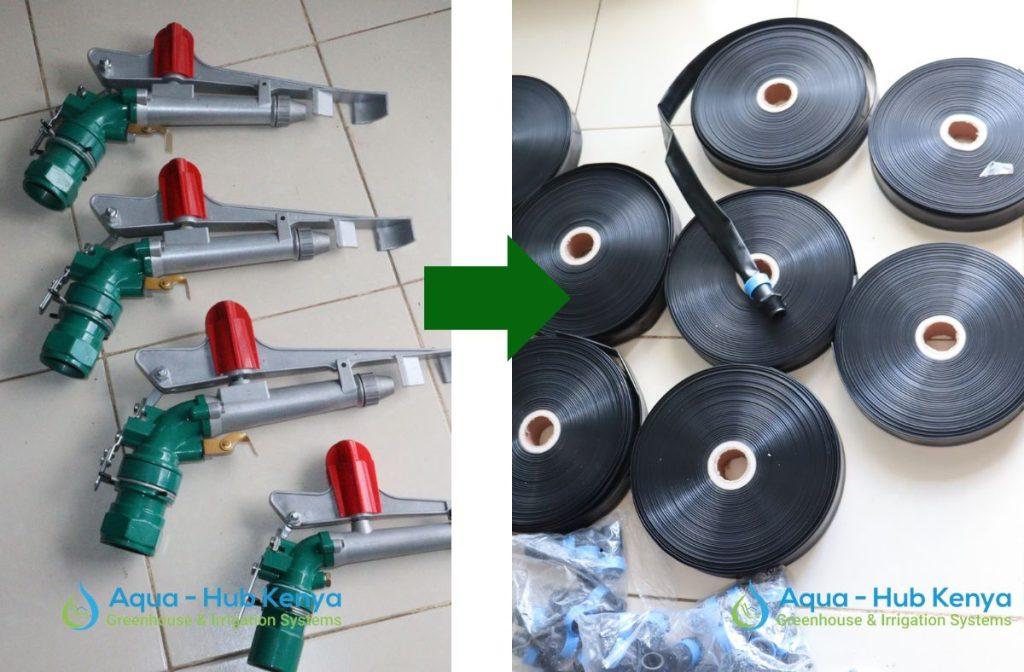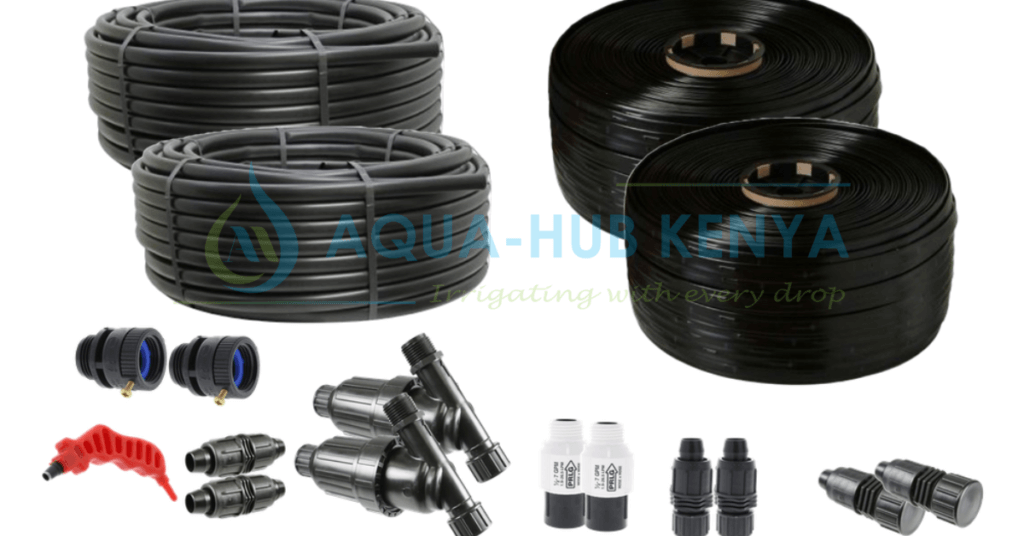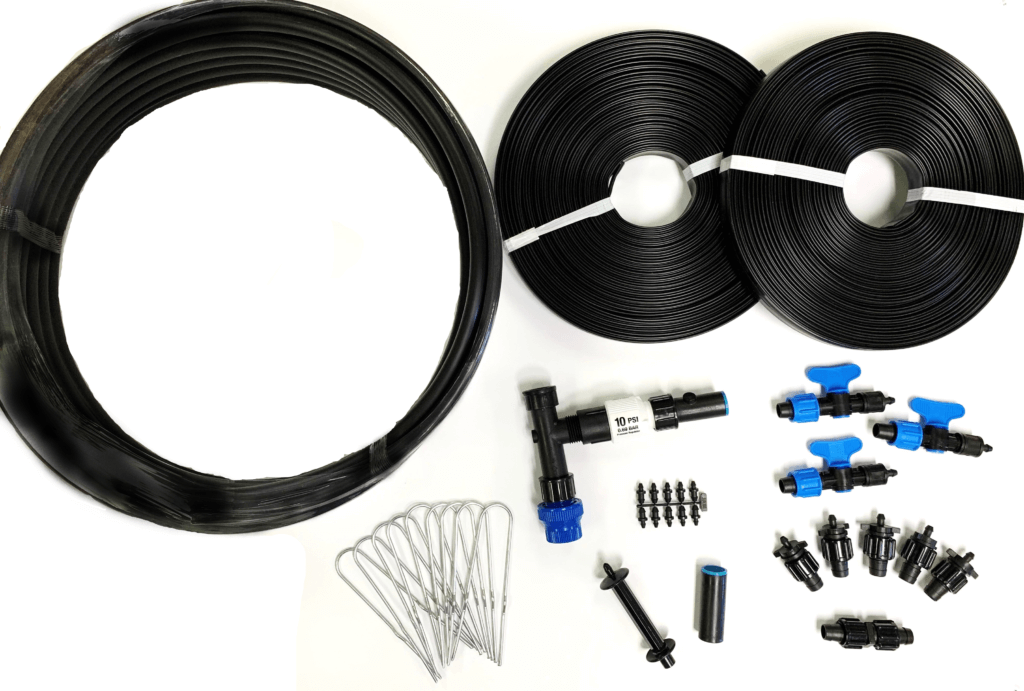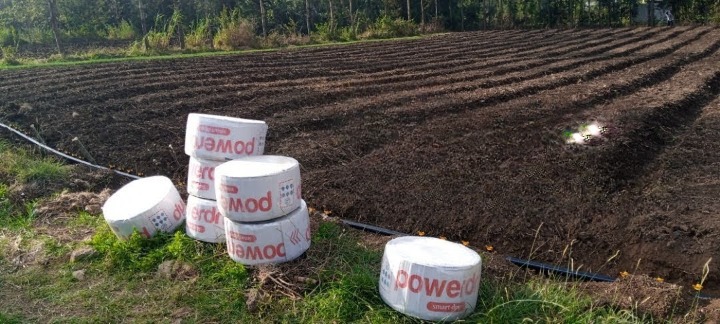Drip irrigation Kits
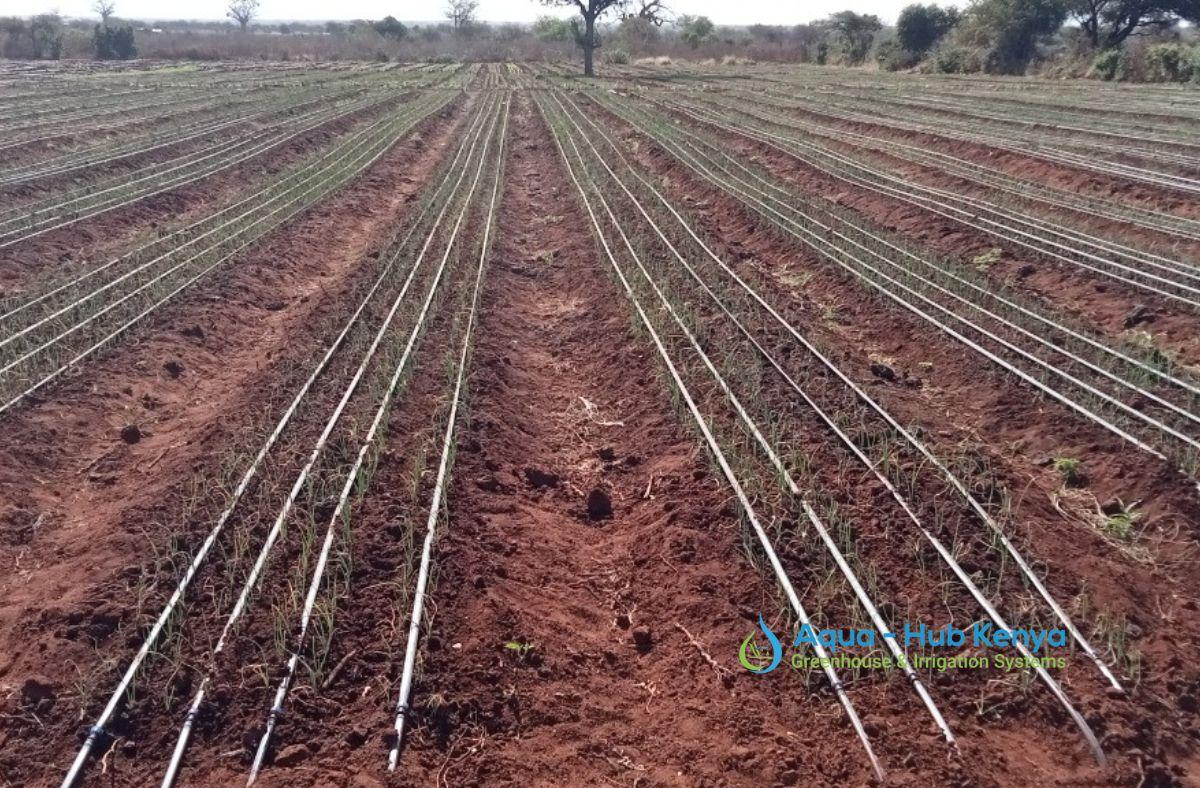
Drip irrigation kit of the highest possible quality are available from us in Kenya. A main water supply line, a pressure regulator, an in-line filter, and a network of drip lines and emitters are typically in drip irrigation kits. Drip kit systems from Aqua Hub Kenya are available in sizes of 1/8 acre, 1/2 acre, 1/4 acre, and 1 acre. The number of lines per bed and the size of the farm will influence the price. A skilled drip irrigation design ought to focus on a number of distinct aspects. Three factors influence a drip kit’s design: uniformity, dependability, and efficiency. Variations in the water supply will directly affect how consistently the crop grows. Therefore, uniformity is essential when growing crops for commercial purposes.
What components make up a drip irrigation kit?
A typical drip irrigation kit includes the following components:
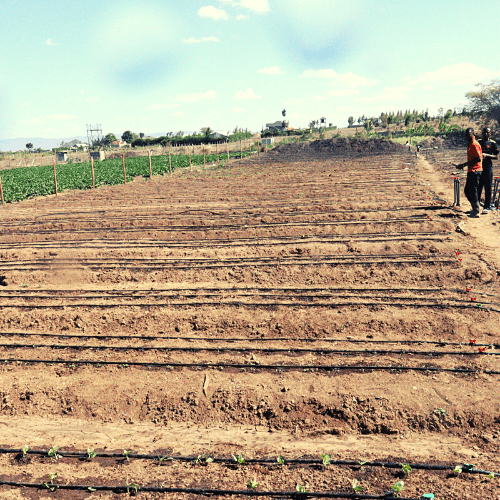
- Mainline tubing: This is the main supply line that carries water from the source to the other components of the system.
- Pressure regulator: This component also helps to regulate the water pressure and keep it within the recommended range. For efficient and effective irrigation.
- Filter: This component is applicable to remove any debris or particles from the water before it reaches the other components of the system.
- Emitters: These are small devices that release water directly to the root zone of plants. Providing them with a slow and consistent supply of water.
- Microtubing: This small tubing connects emitters to the main supply line.
- Fittings: They connect the various components of the system and can include elbows, T-connectors, and end caps.
- Stakes: They also secure the tubing and keep it in place.
- Timer: This component allows you to program and automate the watering schedule. Ensuring that your plants receive the right amount of water at the right time.
- A water source: This could also be a water tank, a well, or a hose tap.
- A pump for water: This is used to transport water to the irrigation system from the source.
In general, a drip irrigation kit is a water-saving and cost-effective way to water your plants. It also helps you save water and makes sure that every plant gets the right amount of water, which can help them grow and be more productive.
How much does a drip kit cost in Kenya?
The size of the garden or field being irrigated and the components that are included in the kit determine how much a drip kit costs in Kenya. The amount of land used and the number of lines installed per bed may influence the cost. 1 Acre and 1 Acre are the smallest and largest acreages, respectively. There may be one, two, or three lines per bed, depending on the crops you produce. As a result, prices range from Ksh 10,000 to Ksh 130,000.
| Size / Lines Per Bed | 1 Line | 2 Lines | 3 Lines |
| 1 Acre | 65,000 | 95,000 | 130,000 |
| 1/2 Acre | 30,000 | 45,000 | 60,000 |
| 1/4 Acre | 16,000 | 25,000 | 35,000 |
| 1/8 Acre | 10,000 | 15,000 | 20,000 |
Some crops may require one drip line per bed, while others may require two, and so on. Tomatoes, capsicums, sukuma wiki, and other plants benefit from two drip lines. For onions and garlic, drip irrigation systems have three drip lines per bed. It’s important to remember that a drip irrigation kit can save a lot of money in the long run because it can increase crop yields and save a lot of water. Furthermore, the expense can change depending upon the merchant and the nature of the parts, so it is essential to research and look at changed choices before buying cautiously.
What factors influence the cost of drip kits in Kenya?
- Size of the kit: The size of the kit, in terms of the number of emitters and length of tubing, can impact the overall cost. Larger kits will typically be more expensive than smaller kits.
- Quality of components: The quality of the components used in the kit, such as the type of tubing and the reliability of the emitters, can impact the cost. Higher-quality components tend to be more expensive but may also offer greater durability and efficiency.
- Brand: The brand of the kit can also impact the cost. Some well-established brands may charge more for their products due to the perceived value of their brand, while others may offer more affordable options.
- Availability: The availability of drip irrigation kits in Kenya can also impact the cost. If there is high demand for the kits and limited supply, prices may be higher. Conversely, if there is abundant supply and low demand, prices may be lower.
- Labor costs: The cost of installation and any necessary labor can also impact the overall cost of a drip irrigation kit in Kenya. If professional installation is required, this can add to the cost of the kit.
- Size of the field or garden: The number of necessary parts and the total cost of the kit will be determined by the size of the garden or field being irrigated.
- Components included: The price will also be affected by the kind of parts in the kit. For instance, a kit with basic components will cost less than one with high-quality water pumps and pressure regulators.
- Vendor location: The price may also be influenced by the vendor’s location, as prices can vary by region.
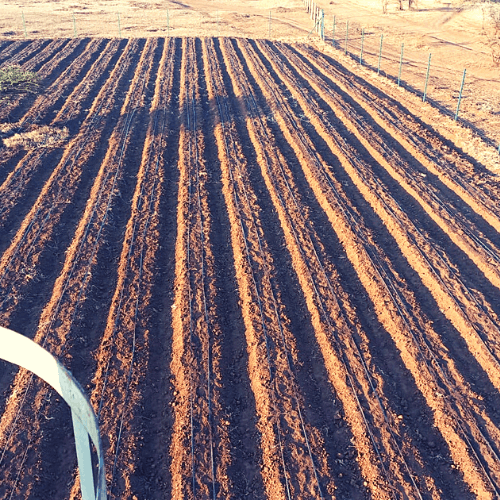
What is the importance of drip kits in Kenya?
Drip irrigation kits are important in Kenya for several reasons:
- Water conservation: Drip irrigation systems deliver water directly to the roots of plants, reducing water waste and evaporation. This helps conserve water resources, which is especially important in arid regions like Kenya, where water is scarce.
- Increased crop yield: By delivering water and nutrients directly to the roots of plants, drip irrigation systems can also increase crop yields and quality. This is especially important for small-scale farmers, who may struggle to produce enough food to feed their families.
- Improved soil health: Drip irrigation systems can help improve soil health by reducing soil erosion and waterlogging, which can cause soil degradation. By delivering water and nutrients directly to the roots of plants, the soil is less likely to become waterlogged, which can lead to better root development and healthier plants.
- Increased efficiency: Drip irrigation systems are also highly efficient, allowing farmers to water their crops using less water than traditional irrigation methods. This can also reduce costs and increase profits for farmers, helping to improve their livelihoods.
Overall, drip irrigation kits are a valuable tool for farmers in Kenya and can also play a key role in supporting sustainable agriculture and improving food security in the region.

